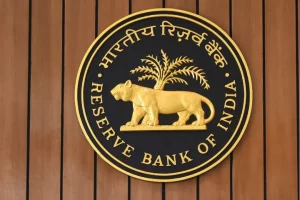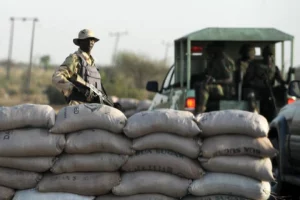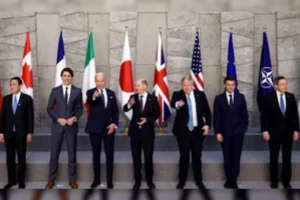China has drawn its “iron brother” Pakistan into a global food security dragnet, which covers vast farmlands in developing countries, and beyond. Beijing’s move to takeover overseas farmland, including in Pakistan, is in anticipation of massive food shortages that China is likely to experience in the coming decades.
China faces an adverse food security equation. It needs to feed 22 per cent of the globe’s population with only seven per cent of available arable land. In contrast 50 per cent of land in India is fit for cultivation. The United States has 20 per cent arable land, and in Europe, 32 per cent of land can be cultivated in France alone.
Analysts say that the mismatch between domestic food supply and demand in China is insurmountable. China estimates that by 2030, when its population is expected to reach 1.5 billion, it will need to produce an additional 100 million tons of food grains each year. But that would be impossible, as China has only 334 million acres of arable land, out of which, 37 million acres are non-cultivable. Growing urbanisation may reduce further reduce farm availability of farmlands in the future.
<strong>Read more: <a href="https://indianarrative.com/world/quad-meeting-rattles-china-to-no-end-16604.html">Quad meeting rattles China no end</a></strong>
But under the cover of resolving its looming hunger problem, China appears to have taken an aggressive strategic decision to dominate global food supply chains through targeted land acquisitions abroad on an industrial scale.
Pakistan is part of the China’s food security offensive. As far back as February 2017, the Pakistani daily <em>Dawn</em> revealed the Chinese plan to make deep inroads in Pakistan’s grain heartland. The daily spilled the beans from a report by China’s National Development and Reforms Commission (NDRC), unveiled that the Chinese had identified 10 key areas for engagement, along with 17 specific projects in Pakistan. These included the construction of one NPK fertilizer plant as a starting point “with an annual output of 800,000 tons”.
Other projects included a meat processing plants with an annual throughput of 200,000 tonnes in Sukkur. Besides, China planned to setup a milk processing plant with a yearly yield of 200,000 tonnes. In crops, 6,5000 acres of land in Punjab would be used to set up demonstration projects focusing on high yield seeds based on efficient irrigation.
In its bid to modernise Pakistan’s archaic farm sector, modern storage bases would be established first in Islamabad and the coastal city of Gwadar, the starting point of the China Pakistan Economic Corridor (CPEC), signalling the export orientation of this undertaking. Karachi, the traditional Pakistani port would also host modern warehousing, as would Lahore, the heart of Punjab followed by Peshawar, not far from the Afghan border.
China’s ambitious plan to channel Pakistan into a larger international food supply chain includes setting up a vegetable processing unit in Asadabad, Islamabad, Lahore and Gwadar, totalling an output of 20,000 tonnes. Besides, a fruit juice and jam plant of 10,000 tonnes and grain processing unit of 1 million tonnes would be established. A cotton processing plant is planned, with an annual capacity of 100,000 tonnes.
But Pakistan not the only game in town for whetting the Middle Kingdom’s appetite. China has also earmarked Africa for major food investments. At the 7th Forum on China-Africa Co-operation (FOCAC) held in Beijing September 2018, Chinese President Xi Jinping pledged $ 61. 52 billion in financing Africa projects for the next three years. This included $ 15.8 billion in grants and interest-free or concessional loans, $10.65 billion development finance fund and $4.73 billion to finance imports from Africa.
China’s Ministry of Commerce (MOFCOM), represent China’s most high-profile investment in African agriculture, according to study by Netherlands based Centre for Agricultural and Rural Cooperation (CTA). China has established three centres across the continent offering farmers Chinese seeds for rice and other crops, as well as technology and training on cultivating everything from mushrooms to maize and rearing livestock such as cows or poultry. MOFCOM has partnered with the Bill and Melinda Gates Foundation, to support two centres in Mozambique and Zambia.
Since 2005, Tian Ze, a subsidiary of China Tobacco Co it has used a contract farming model to expand across Zimbabwe – where, by 2014, it had 387 tobacco farmers in its network, which also included those in Malawi, Tanzania and Zambia.
In Latin America, Chinese investment in agriculture dates back to the 2008 global food crisis. According to the website, www.agri-pulse.com, a wide range of Chinese companies expanded their footprint over the next decade. COFCO, China’s main grain trader was the spearhead of this gigantic effort. The state-owned enterprise made targeted acquisitions to become majority stakeholders and investor in processing, storage, and trading.
Chinese companies such as Chongqing Grain Group, Sanhe, and China National Heavy Machinery Corporation have also invested in factories, pressing plants, mills, and other agricultural infrastructure in Latin America in recent years.
China’s policy banks have financed several networks of roads and rail in Argentina, Bolivia, and elsewhere in the region to support transportation of farm products.
In recent years the Chinese have also targeted acquisitions in other developed food baskets in Australia, New Zealand, the United States and Europe. In Australia, China’s real estate firm Shanghai CRED acquired the world’s largest ranch in 2016. In New Zealand, Chinese companies bought dozens of milk and dairy farms. Ukraine, leased three million hectares of agricultural land to a Chinese company in 2013 and in France, China bought vines and acquired 1,700 hectares of cereal crops in central France.
It is argued that China is hyper-sensitive about its food security on account of its history of flood and famines. But it is likely that given the aggressive Middle Kingdom mindset of the ruling Communist Party of China, which assumes that its centrality in the global system fed by “tributary states” defines its manifest destiny, the problem of hunger is being turned around as an opportunity to control and leverage global food supply chains to advance Beijing’s larger geopolitical interests..



















